The 7 Best HDTV Antenna Amplifiers of 2023 For a Better Signal
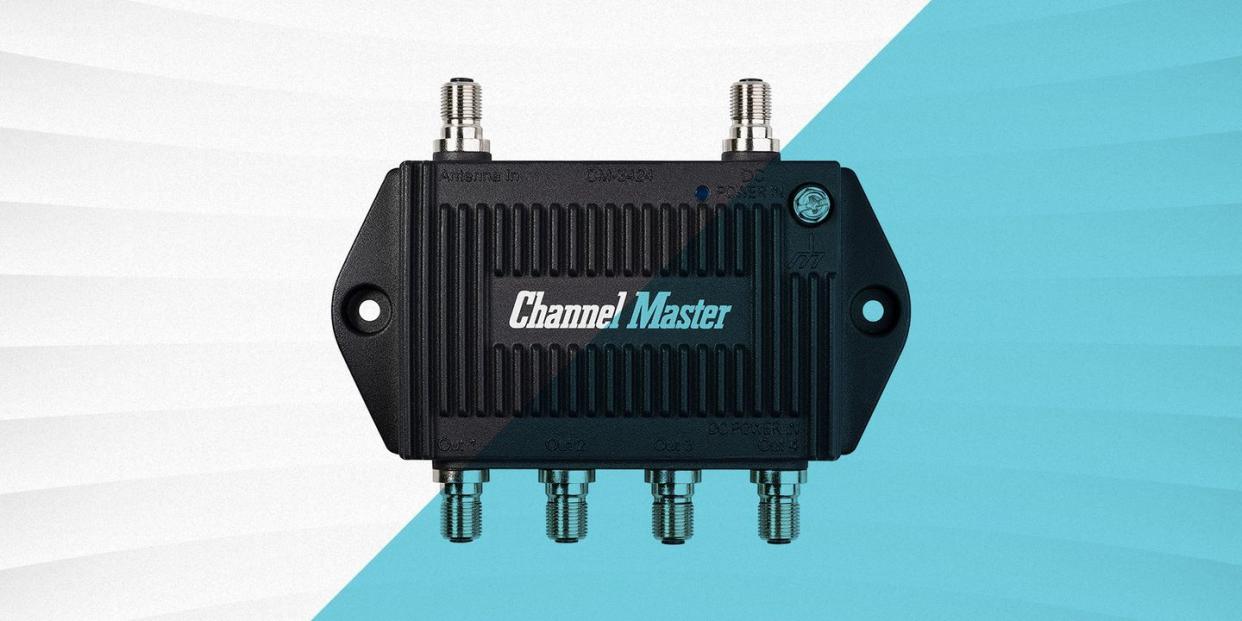
"Hearst Magazines and Yahoo may earn commission or revenue on some items through these links."
If you have trouble getting your local TV channels, an HDTV antenna amplifier can help clean up your fuzzy picture and garbled sound. Even with the switch to a digital broadcast, it’s still entirely possible for your over-the-air (OTA) to suffer from poor reception. Depending on how your cable is set up, an antenna amplifier could be the cure. There’s a popular misconception about how TV amplifiers work, and it’s important to keep in mind that it isn’t a guaranteed fix. We can help you figure out whether the best HDTV antenna amplifiers can help you upgrade your basic cable, and help you pick the right one for your home.
Best HDTV Antenna Amplifiers
Best Overall: Channel Master Ultra Mini Antenna Amplifier
Best Value: Antop TV Antenna Amplifier
Most Versatile: The Cimple Co TV Antenna Amplifier
Easiest Setup: Winegard LNA-100 Boost Antenna Amplifier
Best for Multiple TVs: Antennas Direct 8-Port TV Distribution Amplifier
Upgrade Your Home Theater: Best 4K TVs ● Best Soundbars ● Best Streaming Devices
The Expert: I’m a freelance writer and editor who’s written about streaming TV services, routers, and mobile phones for publications like Forbes, Reviewed, and Popular Science. I’m also old enough to remember what TV was like before streaming became popular, and while I’ve since cut the cord, memories of tinkering with an indoor antenna at my grandparents’ house are still vivid in my mind.
Before You Buy: Do You Really Need an HDTV Antenna Amplifier?
Before we start talking about all the ways that HDTV antenna amplifiers can improve your TV setup, we need to establish what they can and cannot do.
HDTV antenna amplifiers counteract poor picture and sound on local TV broadcasts caused by a degraded cable signal, which may occur when you use an extra-long run of cable or a line that runs through multiple splitters on the way from the antenna to your TV. They are not range extenders, so they will not help you pick up new channels or improve the signal quality of channels at the edge of your antenna’s range.
While an antenna amplifier can enhance the quality of your signal, it may not be necessary or even effective in every situation. If your signal’s fuzzy because of a signal obstruction like a large tree near the antenna or because a channel’s out of range, it will not improve things.
In fact, using an amplifier could worsen your antenna’s reception by overpowering strong signals, causing increased noise or pixelation. It can also generate unwanted interference and noise from nearby electronics or other broadcast channels, degrading the quality of the picture.
We recommend assessing the signal strength of your antenna before buying an amplifier. Check the locations of nearby broadcast towers and signal coverage maps to figure out what channels you should receive, and which ones are on the edge. You can also check Antennaweb.org, which will tell you the signal strength of free over-the-air channels available from local television broadcasters. If you’re getting a fuzzy picture on every channel, make sure your antenna is placed as high as possible, without any physical obstructions that could prevent it from getting a clear signal.
You should also take stock of how much cable you’re running, and if you plan to split the signal to multiple TVs in your home. A signal can weaken over a long cable run–we’re talking hundreds of feet. If you need over 100 feet of cable to hook up all the TVs in your home, make sure to use a high-quality coaxial cable to help minimize signal degradation. Taking these steps should give you a good idea of whether you’d benefit from an amplifier.
What to Consider When Buying an HDTV Antenna Amplifier
If you find that you need an HDTV antenna amplifier, it’s a small, affordable, and relatively easy upgrade to install. Before you run out and buy the first one you find, there are some important technical considerations that you should keep in mind to ensure it works as intended.
Type of Amplifier
There are two types of HDTV antenna amplifiers–preamplifiers and distribution amplifiers.
Preamplifiers, or “mast amplifiers,” amplify the signal before it runs through the cable to your TV. Mounted on or close to the antenna, preamplifiers generally have a higher “gain,” so they boost the signal more. If you have an outdoor antenna, make sure you buy a preamplifier designed to withstand the elements.
Distribution amplifiers work more like extenders. You install them mid-way between the antenna and your TV to boost the signal and prevent signal degradation. The output ports in a distribution amplifier will all have the same strength signal available, but the actual signal boost (gain) is determined by the number of outputs on the amplifier. The amplifier provides a fixed amount of gain, so the signal boost weakens with each cable you add.
Gain
Gain, measured in decibels (dB), indicates how effectively an amplifier can enhance the signal running from the antenna to your TV. The higher the gain value, the greater the amplification. In general, a gain of around 5 to 15 dB should sufficiently bolster a decayed signal without amplifying noise and other interference.
Typically, your cable signal will weaken by 5 dB for 100 feet of cable it passes through. If the signal is weak when it comes out of the antenna, it may become too weak for the TV to decode. In extreme cases, it may even be too weak to amplify with a distribution amplifier.
You only want to add enough gain to counteract the degradation from the extended cable. Some antenna amplifiers come with adjustable gain, allowing you to fine-tune the amplifier to your specific requirements.
Number of Output Ports
Many antenna amplifiers feature several ports, allowing you to enhance multiple cable lines. This is helpful if you're getting a fuzzy signal across many TVs throughout your home. Make sure your amp has enough ports to accommodate every cable you want to boost. Keep in mind that the amp will be less effective as you add more cables, as it only has so much gain. If you’re boosting many lines, make sure to look for a more powerful amplifier.
Frequency Support
TV stations use two frequency bands to broadcast in the US–Very High Frequency (VHF) and Ultra High Frequency (UHF).
VHF signals can travel long distances and penetrate obstacles, including buildings and trees, relatively well. The frequencies range from 54 to 216 megahertz, and cover channels 2 to 13, with each VHF channel allocated a specific frequency within this range. For example, channel 2 is typically assigned a frequency of around 54 MHz, while channel 13 is assigned a frequency of around 216 MHz.
UHF signals typically have shorter wavelengths and are more prone to interference from trees and other obstacles. That said, UHF signals can generally carry more data and are less susceptible to interference from other electronic devices. The frequencies range from 300 to 3,000 megahertz, with channels typically numbered from 14 to 83. While most TV stations use VHF, some stations have shifted to UHF in crowded markets.
Antenna amplifiers strengthen the broadcast signal as it goes through your cable, so they will amplify whatever signal your antenna picks up. That said, you should consider your antenna’s frequency support when assessing whether or not you need an antenna amplifier.
How We Selected The Best TV Antenna Amplifiers
To select the best TV antenna amplifiers, we consulted Lynn Claudy, senior vice president, technology, at the National Association of Broadcasters. Claudy explained the ins and outs of both antennas and amplifiers, helping me understand how they work and how to judge good from the bad. With his insights, we selected a wide range of amplifiers based on user feedback, professional reviews from publications like CNET and BestReviews, and previous coverage from Popular Mechanics.
Ultra Mini Antenna Amplifier
The Channel Master Ultra Mini Antenna Amplifier delivers solid performance, and can act as a hub for sending cable to TVs throughout the house. With four ports granting an extra 8 decibels of gain per line, this amplifier features a heavy-duty housing that’s powder-coated and weather-sealed to withstand the elements.
It also has a grounding screw, allowing you to attach a copper wire for protection from electrical surges. Channel Master also offers an Ultra Mini with 8 ports if you need to split the signal to reach even more TVs.
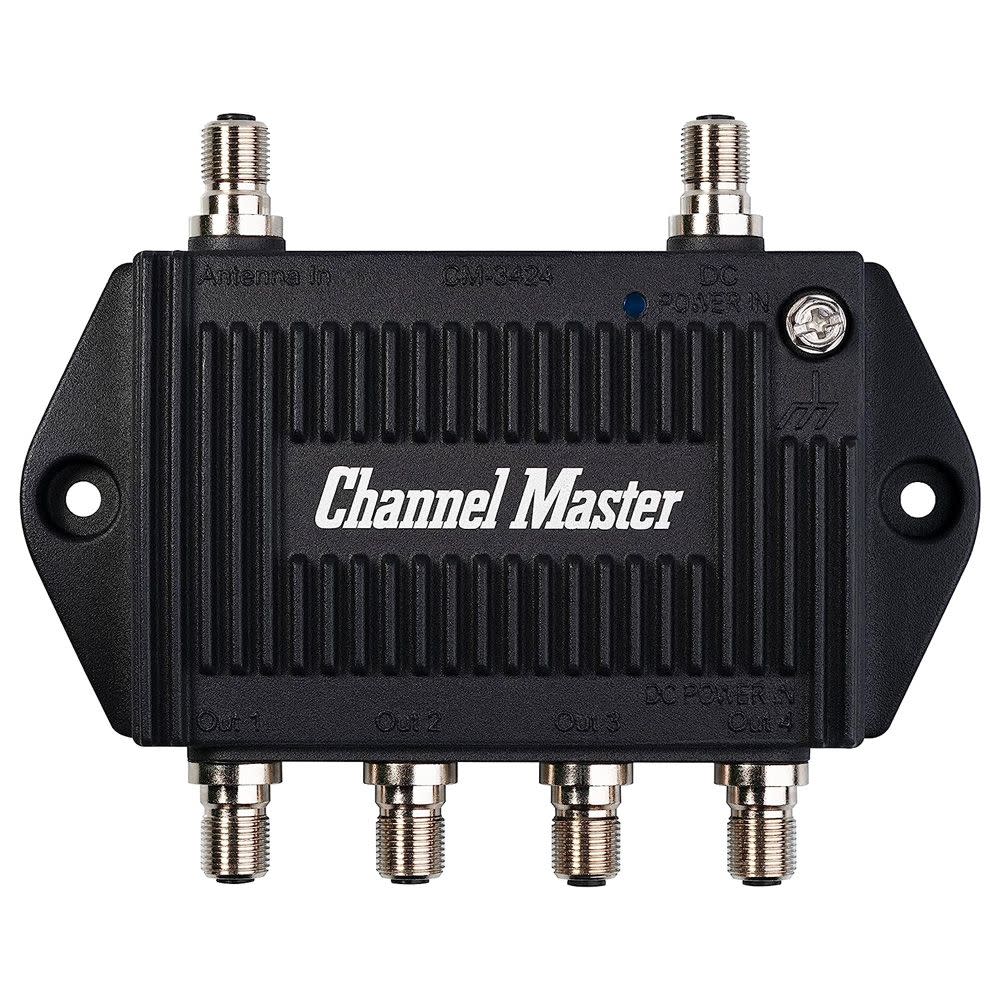
Ultra Mini Antenna Amplifier
$55.00
amazon.com
TV Antenna Amplifier
The Antop TV Antenna Amplifier enhances the signal of a non-amplified or “passive” TV antenna. Passive antennas don’t require any external power source and rely purely on their physical design and positioning to capture broadcast signals. The Antop amplifier features a gain of 16 decibels and a short- and long-range reception switch, allowing you to control how much extra gain it pumps into the signal.
The amplifier also features an LTE filter to block 3G and 4G signals. An LTE filter can help prevent interference caused by the signals, resulting in degraded picture quality and pixelation. The amplifier is easy to install and use, making it an excellent option for the price.
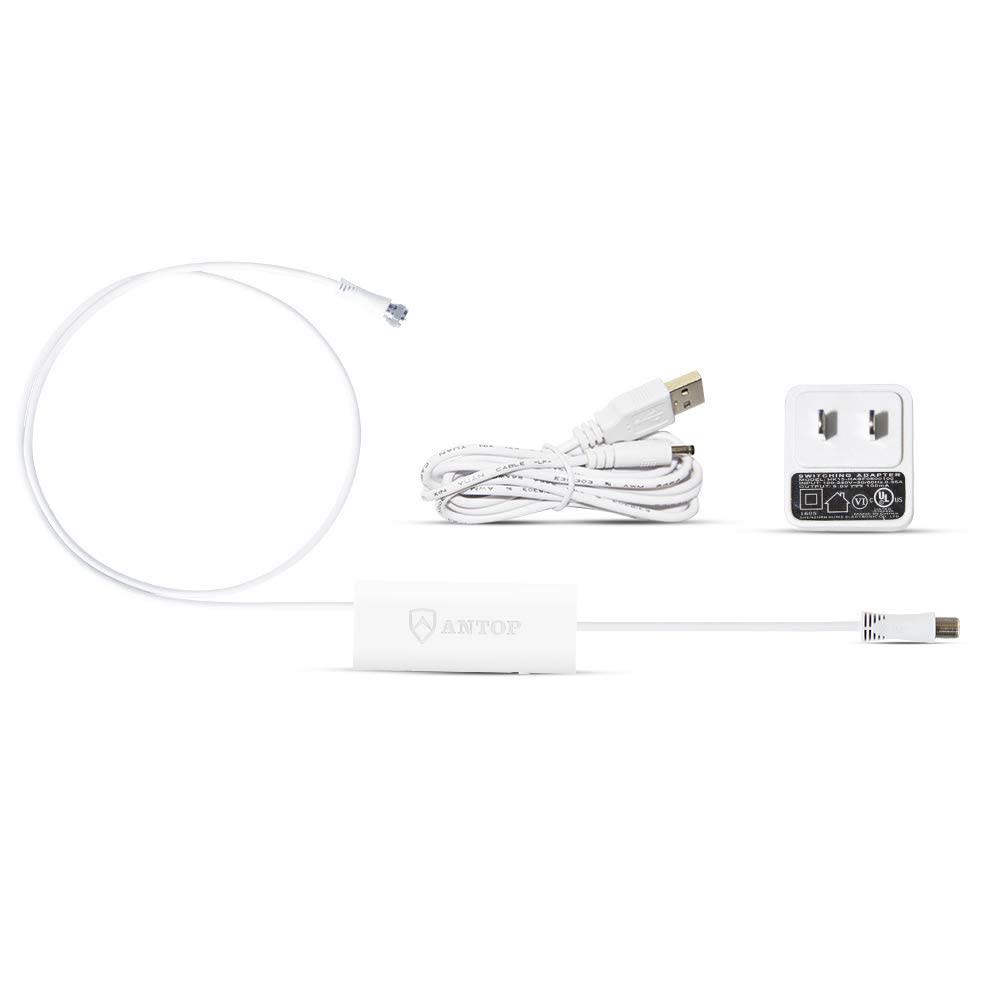
TV Antenna Amplifier
$21.99
amazon.com
TV Antenna Amplifier
The Cimple TV Antenna Amplifier is a powerful distribution amplifier with an adjustable gain feature that reaches up to 24 decibels. Simply turn the adjustment knob to the amount of gain needed for your setup. It also features a heavy-duty metal housing, ensuring it won’t get banged up over the years.
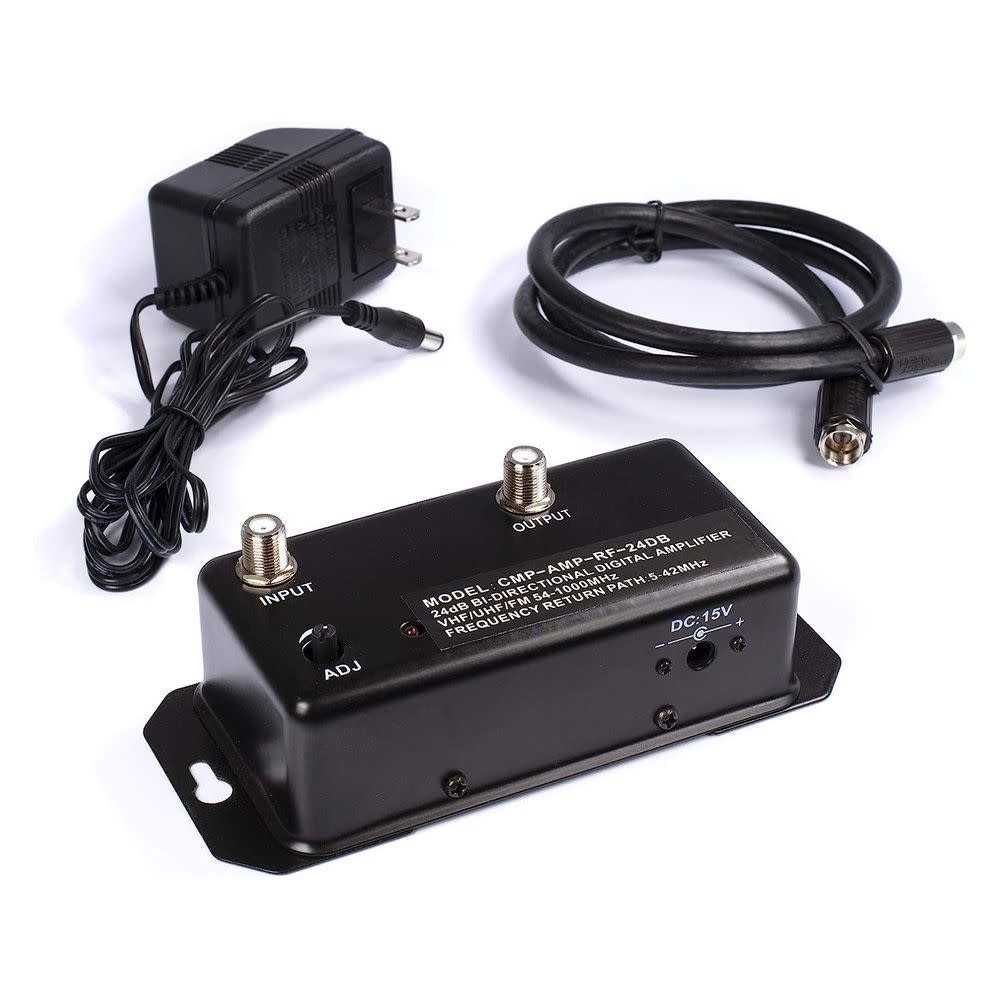
TV Antenna Amplifier
$34.97
amazon.com
LNA-100 Boost Antenna Amplifier
If you’re looking for an antenna amplifier that's easy to set up and minimizes wires in your house, the Winegard LNA-100 Boost is an ideal choice. It's a great amplifier if you just want to amplify signals to one device. Simply connect it to your TV and your antenna, and you’ll reduce noise and get access to more channels.
This amplifier works with both UHF and VHF signals and any non-amplified or passive antenna.
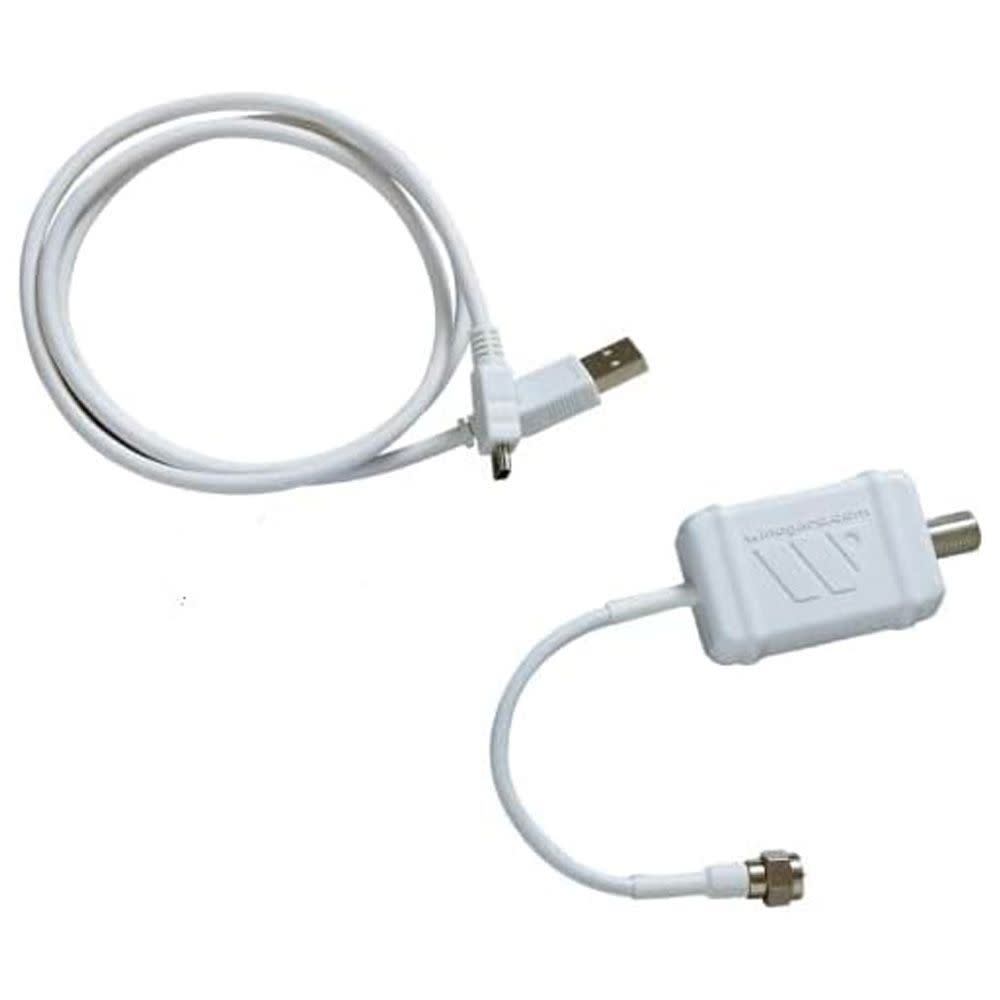
LNA-100 Boost Antenna Amplifier
$34.97
amazon.com
8-Port TV Distribution Amplifier
For households with multiple TVs, the Antennas Direct 8-Port TV Distribution Amplifier can split a signal with no noticeable impact on signal quality. You can hook this amplifier up to your antenna and distribute a clear and strong signal to eight TVs, with a gain of 4 decibels per port.
The Antennas Direct 8-Port is recommended for indoor use. However, the company said it can be used outdoors as long as you place caps over any unused ports. Being able to use it indoors or outdoors gives you extra flexibility to install the amplifier where it makes sense for your setup.
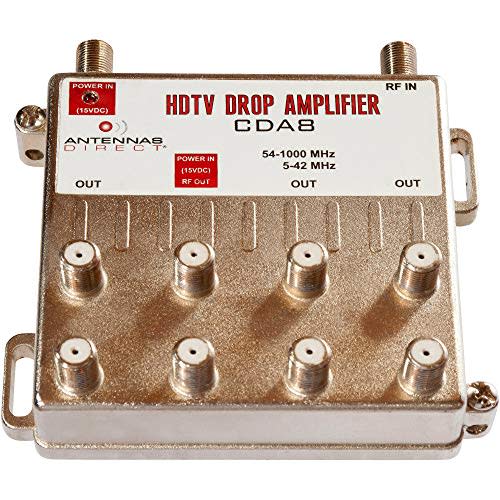
8-Port TV Distribution Amplifier
$54.99
amazon.com
9-Port Antenna Amplifier
The Reliable Cable Products nine-port amplifier features a durable powder coating that keeps it safe from various weather conditions, including extreme cold and heat (-40 to 140 degrees). It also has a surge protector to protect it from voltage spikes.
The amplifier features eight output ports to connect to various TVs in your home and an output port for Voice over Internet Protocol, or VoIP, which allows you to make phone calls over the internet. Reliable Cable’s amplifier can also be mounted horizontally or vertically with two separate brackets, making it easier to install in the spot you want.
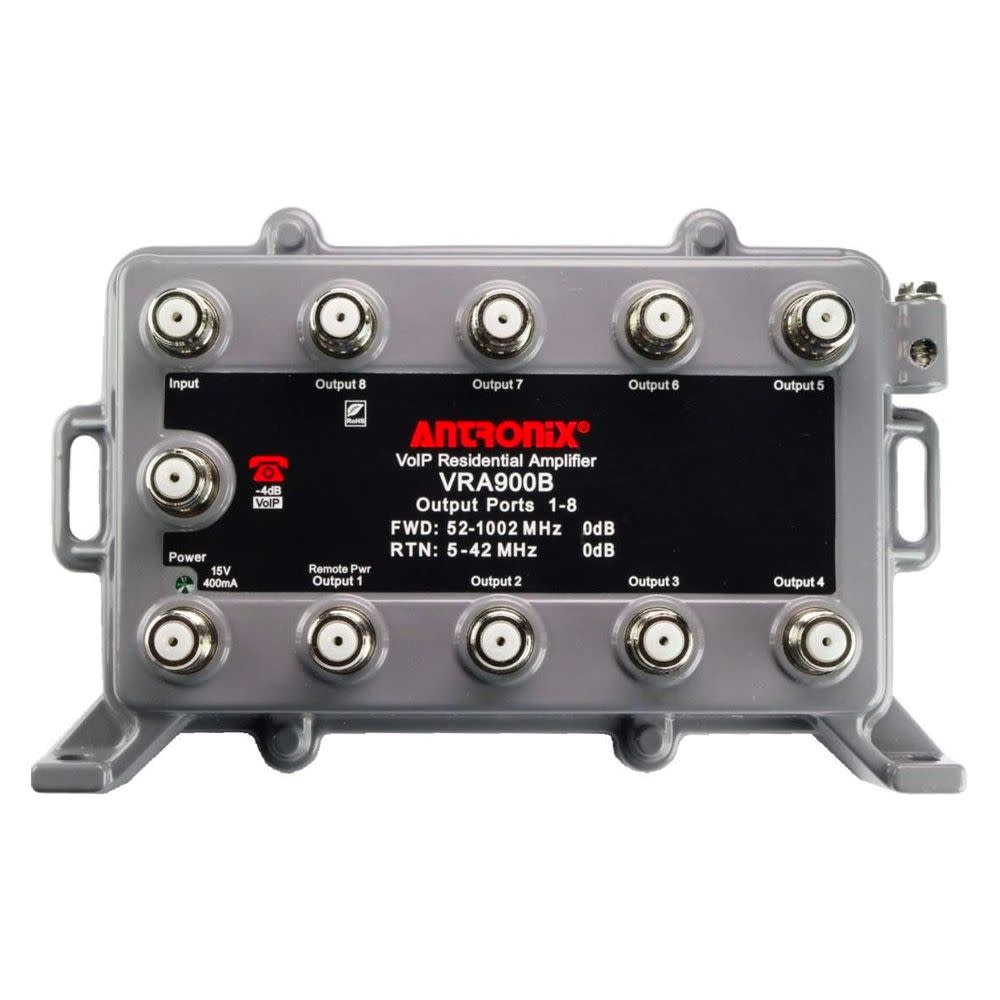
9-Port Antenna Amplifier
$62.66
amazon.com
WA-2608 Amplified Outdoor Antenna
Most antenna amplifiers are sold separately so you can connect them to your cable if you need them, but some antennas come with a gain boost built right in.
The antenna-amplifier combo has a remote that allows you to rotate the antenna 360 degrees to point it in the direction of broadcast towers up to 150 miles away. It’s also built to be highly weather-resistant and offers a gain of up to 36 decibels. As a bonus, it features two ports, allowing you to connect multiple TVs without a splitter.
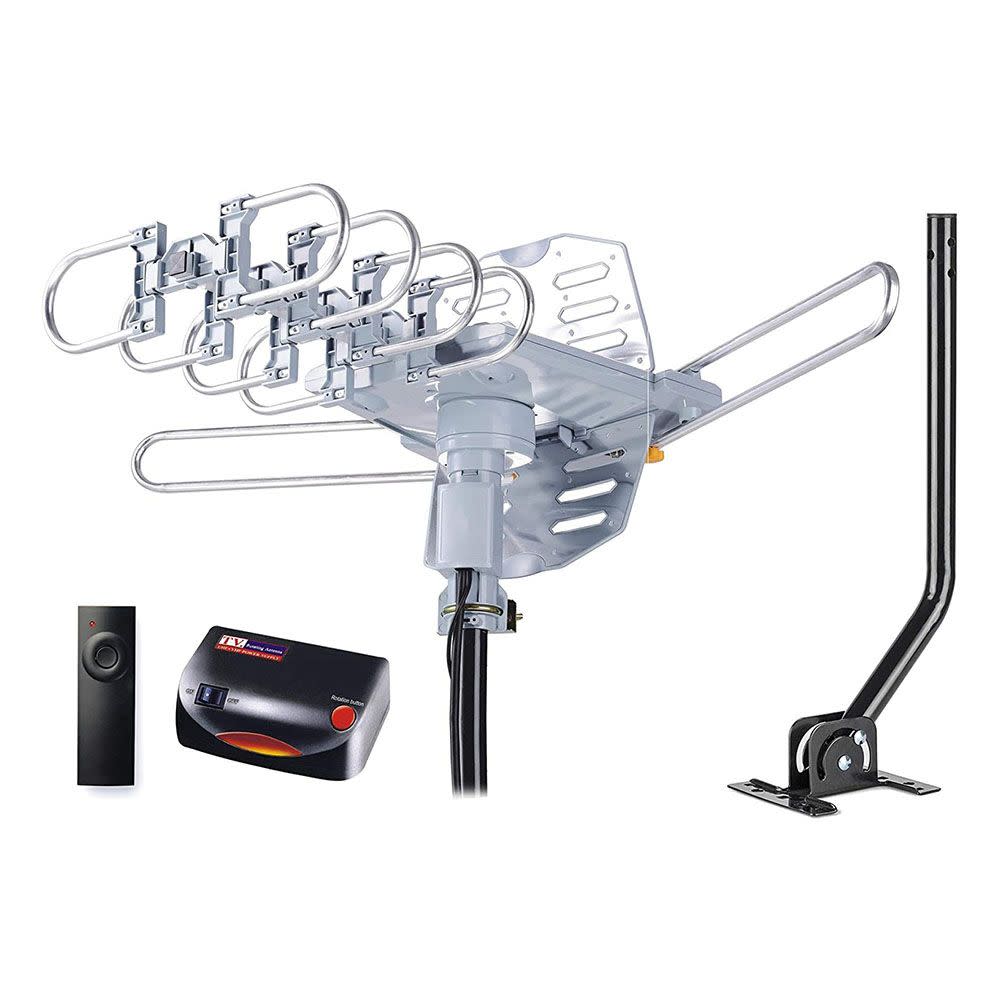
WA-2608 Amplified Outdoor Antenna
$50.98
amazon.com
HDTV Antenna Amplifier Tips From Our Expert
Will a TV antenna amplifier help me receive more channels?
No, a TV antenna amplifier won’t suddenly make new channels appear. As we mentioned in our disclaimer, an amplifier won’t extend the range of your antenna or magically bring in new channels that aren’t hitting your TV antenna in the first place.
An amplifier can boost the signal strength of weaker signals, but it can’t expand the range of available broadcasts. If your goal is to receive more channels, consider tweaking your antenna’s position for better reception, or purchasing a larger one.
What if an amplifier doesn’t improve my reception?
There are a few basic steps you can take to improve your local TV reception that don’t require an amplifier. You can try adjusting your TV antenna’s position, ensure you use low-loss coaxial cables, or purchase a higher-quality antenna suitable for your specific situation.
A clear line of sight between the antenna and the broadcast towers can improve reception. In most cases we recommend taking all of these steps before buying an amplifier, since they are more likely to improve your signal.
How much gain should I add to a weak signal?
Figuring out how much gain to add to a weak signal requires some trial-and-error. If you’re using an amplifier with adjustable gain, start by adding the minimum amount and see if it improves the signal. If not, gradually increase the gain in small increments and continue fine-tuning the gain setting until you find the optimal balance between signal strength and quality.
One mistake many people make is trying to measure the effectiveness of an amplifier using the built-in signal meter in their TV’s menu system. While these meters can serve as a reference point, they do not visually represent signal levels in dB.
You should seek the help of a professional with the necessary equipment to measure signal strength. They’ll be able to advise you on how to improve your TV’s reception and whether or not an antenna amplifier will be beneficial.

You Might Also Like
